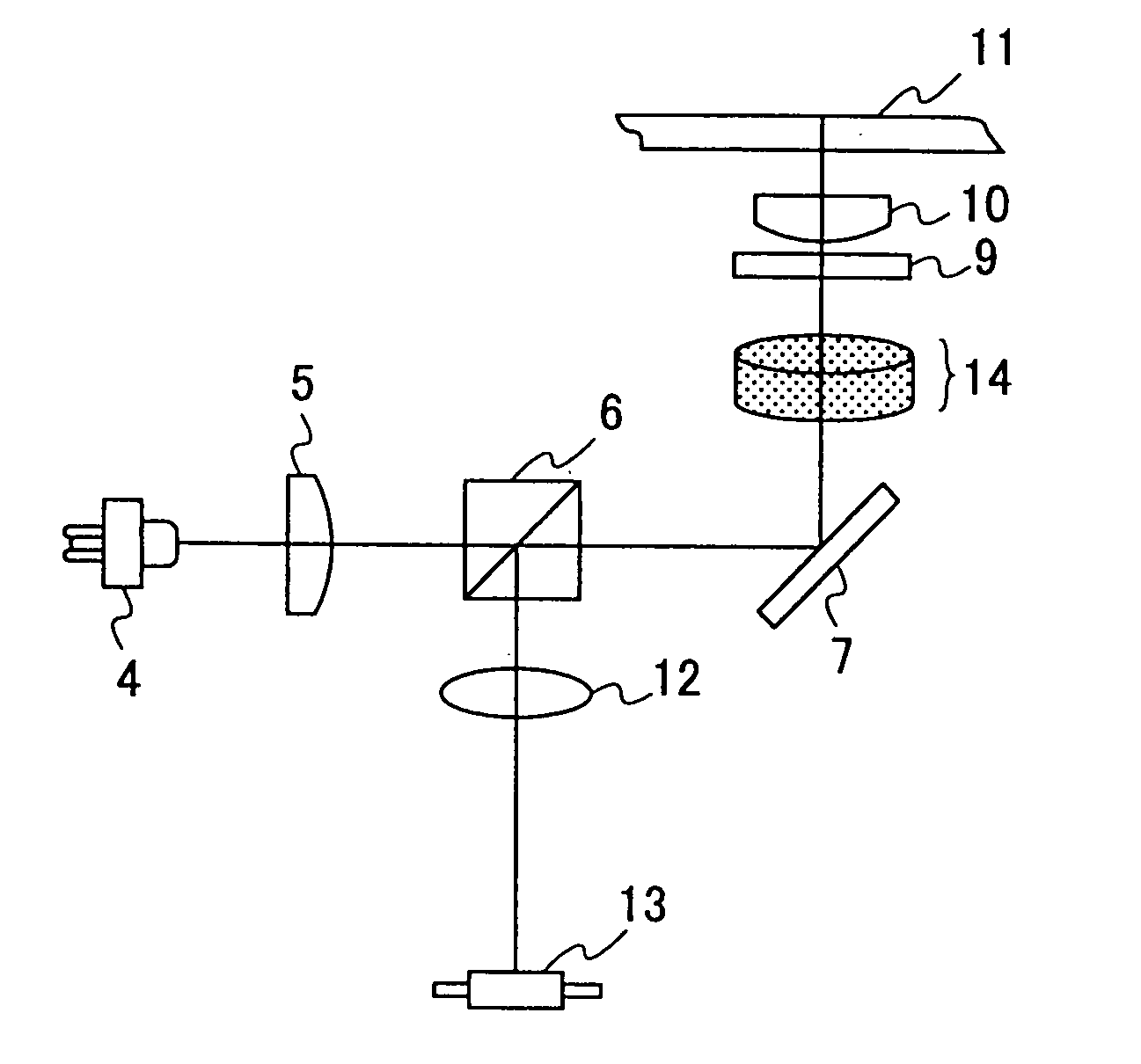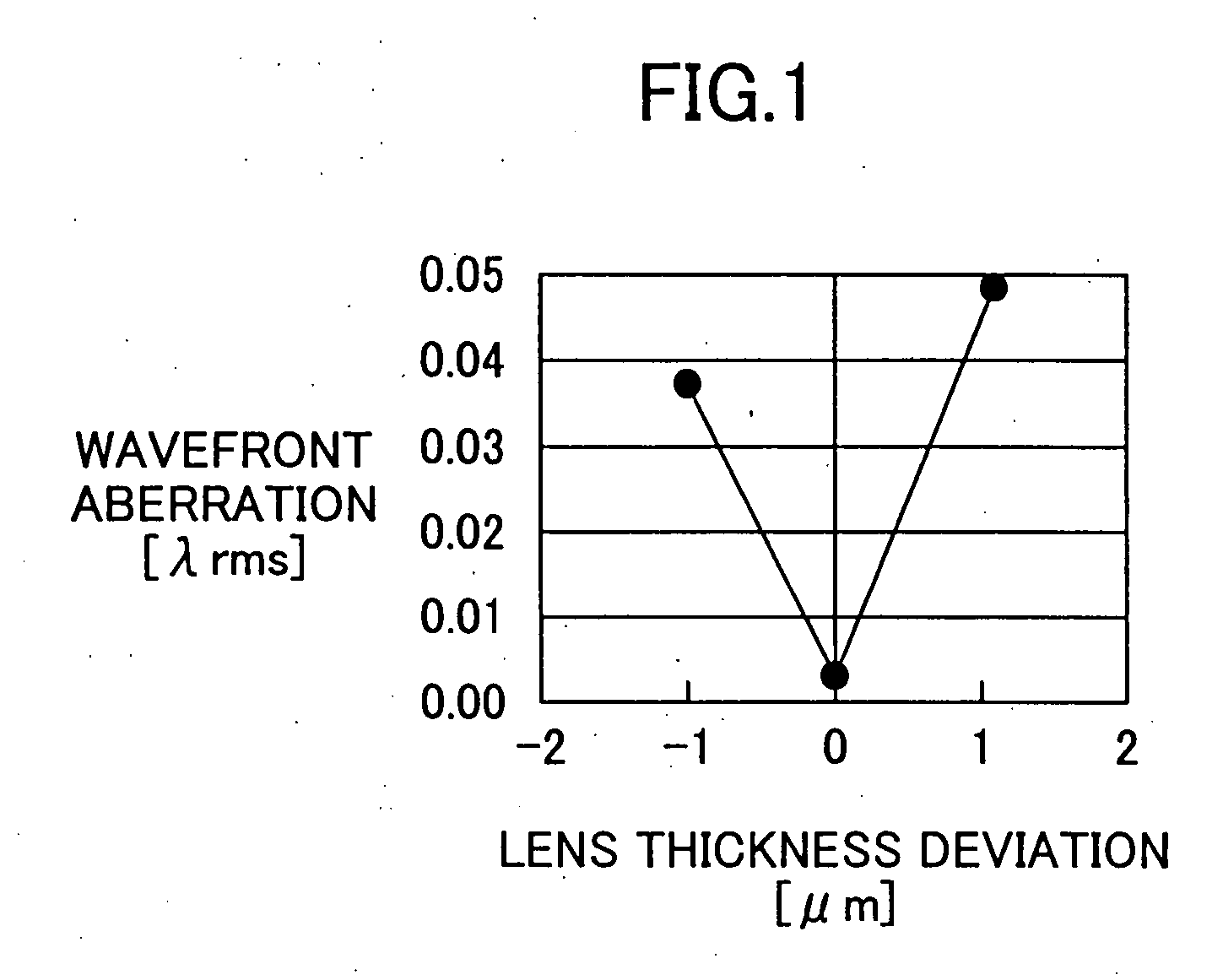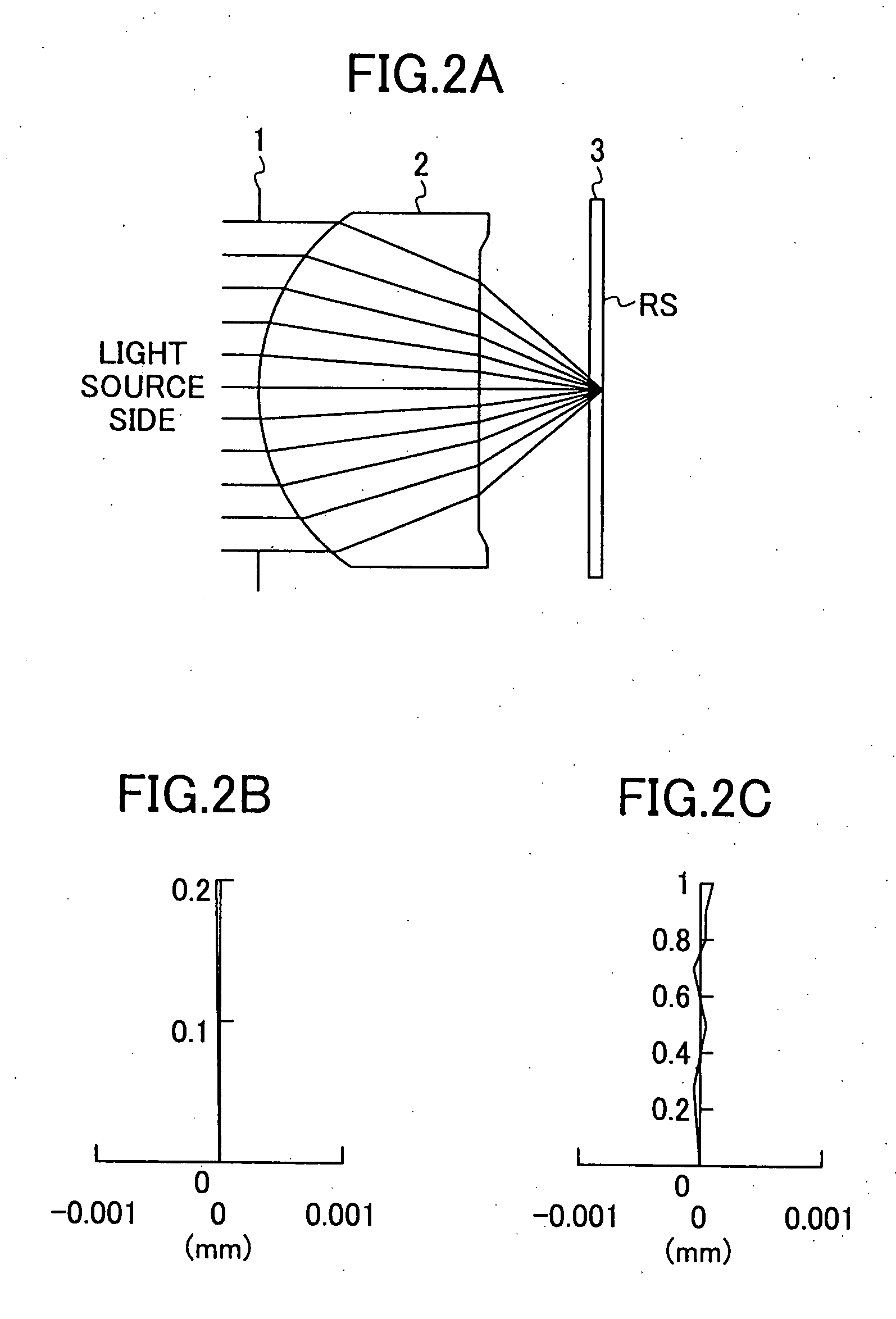Object lens for optical pickup, optical pickup and optical information processing device
a technology of optical information processing and object lens, which is applied in the direction of lenses, instruments, record information storage, etc., can solve the problems of not being driven at a high speed, requiring high precision in assembling work, and two-lens-combined configurations that require complicated assembly processes. , to achieve the effect of adversity
- Summary
- Abstract
- Description
- Claims
- Application Information
AI Technical Summary
Benefits of technology
Problems solved by technology
Method used
Image
Examples
embodiment 1
[0093] The object lens for the optical pickup in the embodiment 1 is used with the operating wavelength of 650 nm. Further, this lens has the following specification:
[0094] NA: 0.65, f: 2.31 mm, nd=1.74330, and νd=49.36. The other specific data is show in FIG. 14.
[0095] In the table shown in FIG. 14, “OBJ” stands for an object point (a semiconductor laser as a light source). The object lens for the optical pickup is according to “infinite system”. Accordingly, “INFINITY” mentioned in the item of each of the curvature radius RDY and thickness THI means that the light source is located at the infinite distant point. “STO” stands for a surface of the aperture 1, and, the curvature radius RDY is set to “INFINITY”, and the thickness thereof is set to “0” on the design. In the description of the embodiments, the unit of amount having a dimension of length is “mm”, hereinafter.
[0096]“S1” stands for the “light-source-side surface” of the object lens for the optical pickup, and “S2” means...
embodiment 2
[0101] An object lens for an optical pickup according to the embodiment 2 of the present invention is an example used with the operating wavelength: 650 nm. Further, NA: 0.65, f: 2.31 mm, nd=1.58313, and νd=59.46. The other specific data is shown in FIG. 15 in the manner same as that of FIG. 14.
[0102]FIG. 3A shows an arrangement of the aperture 1, the object lens 2, and the incident side substrate 3 in the embodiment 2. FIGS. 3B and 3C show the astigmatism and the spherical aberration of the object lens in the embodiment 2, respectively, where the scale on the vertical axis indicates the value normalized in a manner such that the entrance pupil radius is made to be 1. As can be seen there, both the aberrations are corrected very satisfactorily. In fact, “wavefront aberration” is less than 0.01λ.
[0103] As mentioned above, according to the embodiment 2, R1=1.47611 mm, f=2.31 mm, nd=1.58313, and the number of Abbe νd=59.46 and working distance (WD)=1-0.096024 mm. Accordingly, R1, f, ...
embodiment 3
[0104] An object lens for an optical pickup according to the embodiment 3 of the present invention is an example to be used with the operating wavelength: 650 nm. Further, NA: 0.75, f: 2.00 mm, nd=1.74330, and νd=49.36. The other specification is shown in FIG. 16.
[0105]FIG. 4A shows an arrangement of the aperture 1, the object lens 2, and the incident side substrate 3 in the embodiment 3. FIGS. 4B and 4C show the astigmatism and the spherical aberration of the object lens in the embodiment 3, respectively, where the scale on the vertical axis indicates the value normalized in a manner such that the entrance pupil radius is made to be 1. As can be seen there, both the aberrations are corrected very satisfactorily. In fact, “wavefront aberration” is less than 0.01λ.
[0106] According to the embodiment 3, R1=1.45407 mm, f=2.00 mm, and nd=1.74330, the number of Abbe: νd=49.36 and working distance (WD)=0.585206 mm. Accordingly, R1, f, and nd satisfy the conditions expressed by the follow...
PUM
| Property | Measurement | Unit |
|---|---|---|
| thickness | aaaaa | aaaaa |
| thickness | aaaaa | aaaaa |
| thickness | aaaaa | aaaaa |
Abstract
Description
Claims
Application Information
 Login to View More
Login to View More - R&D
- Intellectual Property
- Life Sciences
- Materials
- Tech Scout
- Unparalleled Data Quality
- Higher Quality Content
- 60% Fewer Hallucinations
Browse by: Latest US Patents, China's latest patents, Technical Efficacy Thesaurus, Application Domain, Technology Topic, Popular Technical Reports.
© 2025 PatSnap. All rights reserved.Legal|Privacy policy|Modern Slavery Act Transparency Statement|Sitemap|About US| Contact US: help@patsnap.com



